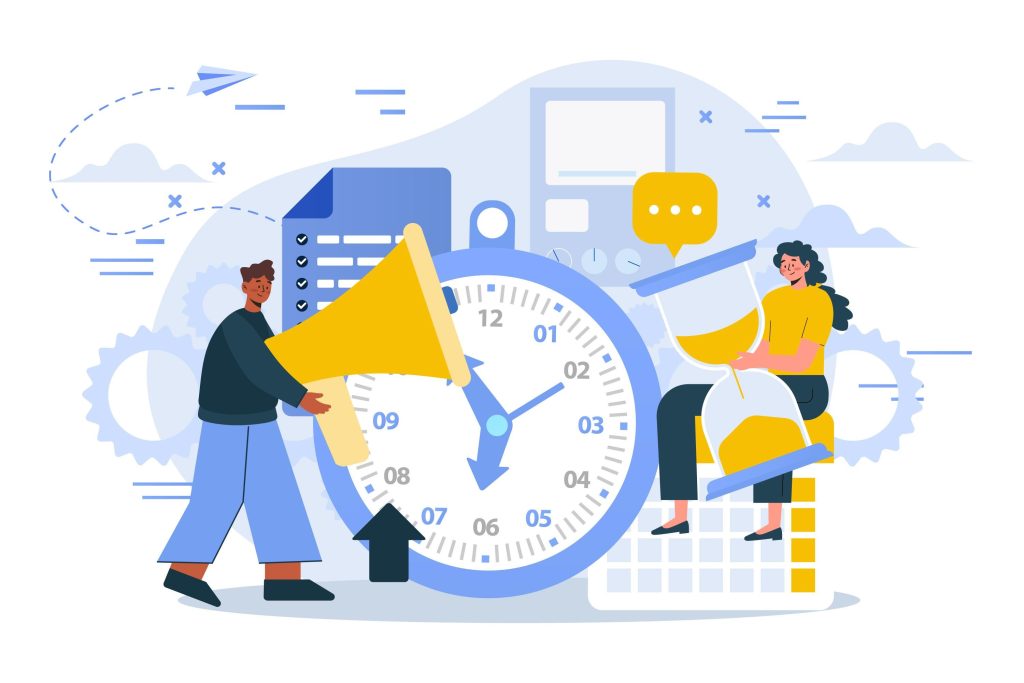Effectively optimizing your lead generation efforts involves implementing various tactics through multiple stages of the process. One such element is known as lead response time, which occurs during the lead nurturing phase. So, how quickly should you contact inbound leads, and why is the response time so important?
In this article, we’ll elaborate on when you should contact your inbound leads and the best strategies to improve your response time. We’ll explain why lead response time is crucial for your business success, as shown by statistics. To better understand its effects on your overall business operations, we’ll also highlight some of the consequences of delayed responses and how to prevent them.
Continue reading to discover all there is to know about the right time to contact your inbound leads!

How Quickly Should You Contact Inbound Leads
The general rule of contacting leads is that you should do it as soon as possible the moment they’ve shown any interest in the services or products you offer. An immediate response rate of approximately 5 minutes significantly increases your chances of converting the lead into a paying customer.
Remember that in today’s fast-paced online marketplace, modern customers expect a quick response within minutes. With an average attention span of 8 seconds, which can be reduced when reading online content, it’s important for businesses to satisfy the user’s needs promptly, especially when they’ve shown interest in their products or services. Immediate responses help you showcase your dedication and demonstrate your company’s efficiency and customer focus.
If your company lacks the resources to implement immediate responses, you should strive to contact the potential customer within at least 30 minutes. Even though this lead response rate isn’t as effective as responding within the first 5 minutes, it can still increase your conversion rate compared to waiting longer.
Lead Response Time is Crucial, as shown by Statistics
The Harvard Business Review conducted a study on the short life of online sales leads that showed that the companies responding within an hour of the customer’s request are approximately seven times more likely to have a meaningful conversation with important decision-makers than those who responded an hour later. In the same study, they discovered that businesses that waited over 24 hours to respond were 60 times less likely to qualify for the lead based on the set criteria.
On the other hand, Forbes’ report on internet leads shows that even though businesses can contact approximately 92% of leads when implementing the right strategies, only around 27% of the potential leads actually get contacted. This highlights the importance of utilizing the right tactics during the lead nurturing phase because each lead that wasn’t contacted is a missed opportunity to convert them into a paying customer.
The report shows that those who contact a lead within the first 5 minutes are 21 times more likely to turn them into paying customers than those who contact them in 30 minutes. The odds of qualifying that lead decrease over six times after the first hour.
The Consequences of Delayed Responses
Failing to respond to leads promptly negatively impacts your conversion rates. Not only may the potential customers lose interest in purchasing your product or service, but they may also stop engaging with your overall business.
Taking too long to respond to the lead’s inquiries can result in poor customer experience, which can seriously damage your brand’s reputation. If your company fails to give answers about basic product or service information, you’ll appear unreliable and unprofessional, further losing the trust of your audience and decreasing the chances of future interactions.
Another great risk of slow response rates is losing your competitive advantage. It’s only natural that those who quickly respond to their customer’s questions create stronger relationships with their target audience. Taking too long to respond can discourage the user, and they may seek the services or product from your competitor.
Strategies for Improving Response Time
Lastly, we want to introduce you to some of the best strategies for improving your response time. Here are some of the best practices you should have in mind when optimizing your lead response times:
- Utilizing CRM systems: short for Customer Relationship Management, these tools are designed to automate various lead-generation efforts, including lead capture, tracking, and follow-ups. You can even create automated email responses to lead inquiries, ensuring a fast response rate.
- Training your team: implementing efficient sales team training and education can greatly improve your response time. By educating them about the best practices regarding lead response and communication, you can equip them with the skills needed to handle inquiries quickly and effectively.
- Frequent monitoring and analysis: by setting clear response goals and objectives, you can determine which metrics you need to track to further optimize this process. Utilizing analytics tools to monitor response times and conduct regular performance reviews can help you uncover key pain points and areas of improvement.

Conclusion
So, how quickly should you contact inbound leads? The simple answer is that you should respond to your leads as soon as possible. Even though many businesses often overlook the importance of quick response times, statistics show that there’s a big difference between the results when replying to the lead within 5 minutes and 30 minutes. The longer you wait to respond to the user’s inquiries, the fewer chances you have to convert them into paying customers.
Since we understand that lead generation may be a challenging and complex process for many companies, our team at Clickvision LeadGen offers hot and high-quality leads ready to become paying customers. By connecting you with the users who are actively searching for the products and services you offer, you can minimize your lead nurturing efforts and improve your conversion rates. So, contact us today and gain access to the audience that’s ready to convert into loyal and paying customers.

Dimitar is a seasoned marketing specialist and the visionary behind CLICKVISION. With over 10 years in digital marketing, he excels in crafting marketing strategies that boost rankings, which in return increase leads, conversions, sales, profits, and ROI.
